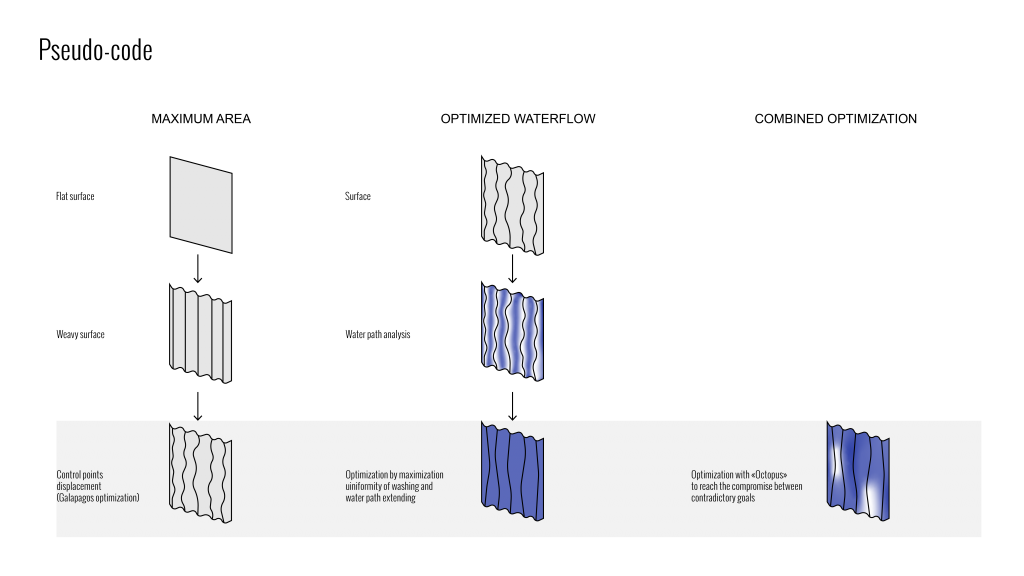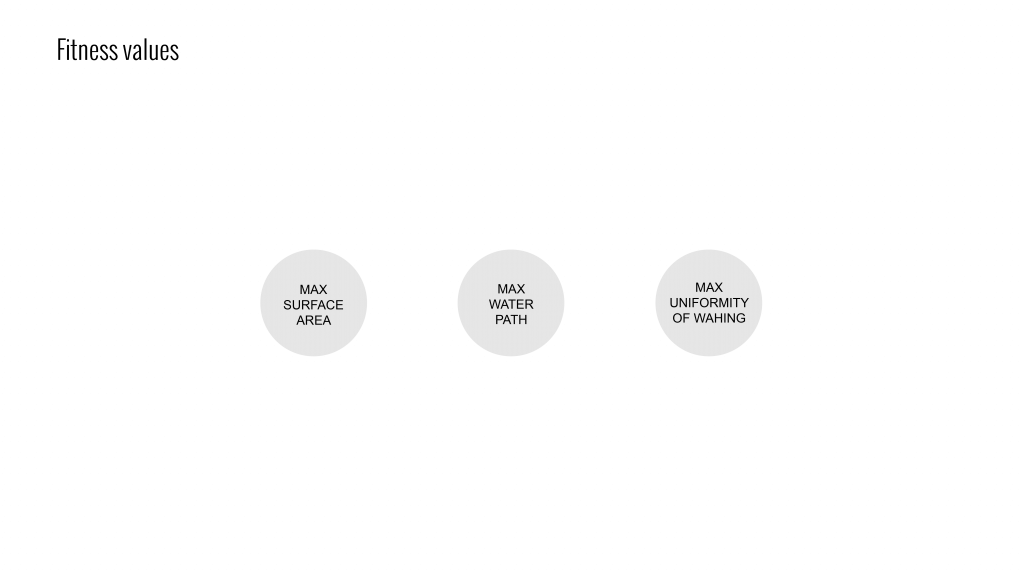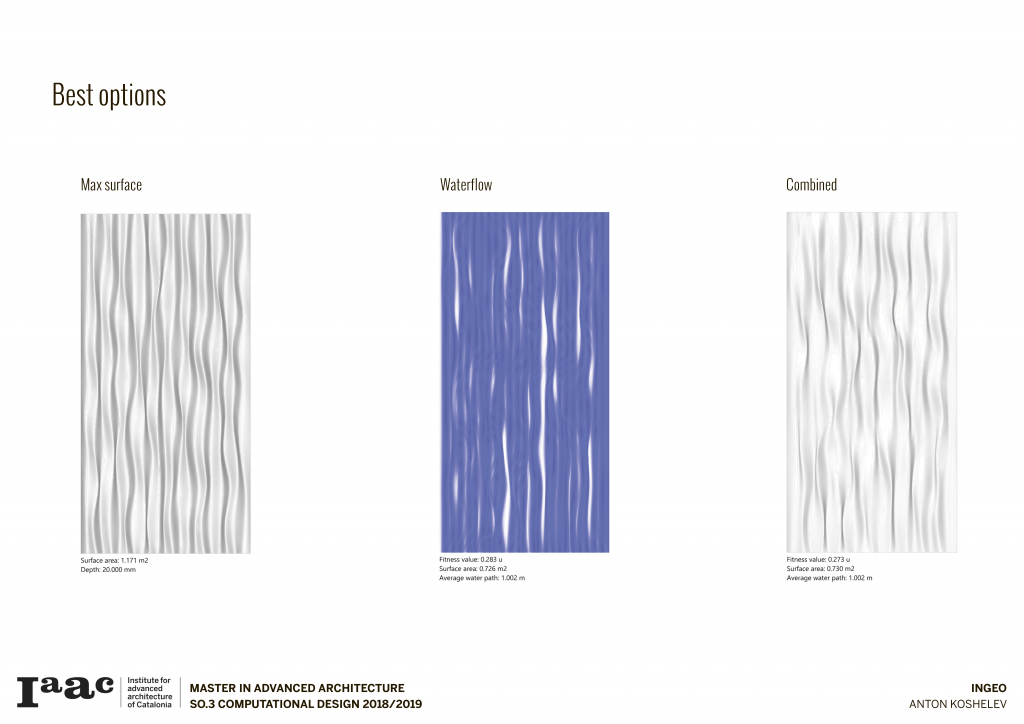INGEO
To increase the performance of the material system and the absorption rate of carbon dioxide, it is necessary to create a geometry that fits the following parameters:
- The maximum active surface area to increase the amount of carbon dioxide absorbed per cycle.
- The maximum surface area to increase the amount of performative material can be applied
- The maximum contact of the active surface with ambient air to accelerate carbon dioxide absorption per cycle.
- Protection of the active surface from rainwater to prevent the release of carbon dioxide into the ambient air.
- Minimum consumption of sodium carbonate solution with evenly washing of the panel per cycle.


Using the above design drivers, the geometrically optimized module is developed through Grasshopper definitions used to generate the above parameters into an optimized form. Using evolutionary algorithms the output form holds the optimal ratio of parameters. By producing several iterations of differing simulations, we are able to merge the data and find a final shape of the module.

The final geometry consists of three thin waved layers sealed on the sides. The front layer contains the openings for ambient air access designed in such a way that water enters into the interior surfaces of the walls. The middle layer is perforated for air circulation inside. The back layer is solid with mounts for the facade system embedded.
Computational Design // IaaC, Institute for Advanced Architecture of Catalonia
Developed at Master in Advanced Architecture in 2019 by:
Student: Anton Koshelev
Faculty: Rodrigo Aguirre
Assistant: Daniil Koshelyuk, Nikoleta Mougkasi